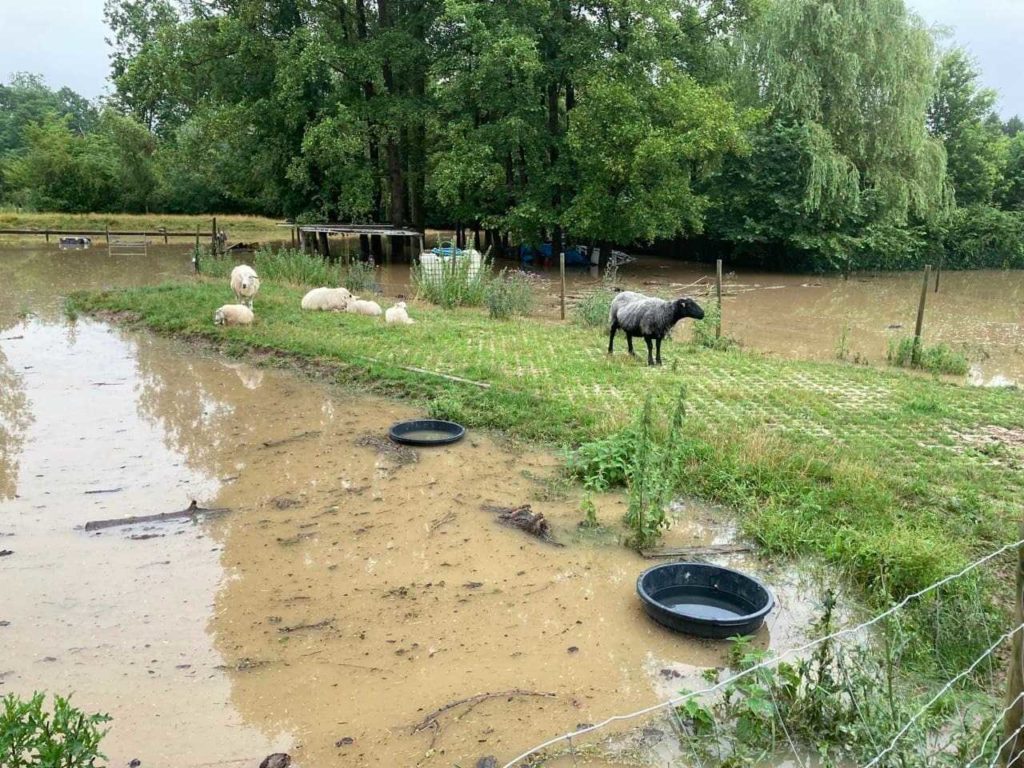The water damage caused in recent days by heavy rainfall and rivers bursting their banks has had a heavy human toll, but how is the situation for farmers?
Wallonia has been hardest hit, with many fields still under water today. The situation is dire for animals kept outside, as well as for arable crops, which are simply drowned and most likely cannot be harvested.
“The heavy rainfall has caused mudslides and temporarily flooded crops,” said Aurélie Noiret of the Walloon agricultural federation (FWA). “Many crops of grain, rapeseed and flax have simply been washed away. Some farms were flooded and the animals had to be evacuated.”
The exact extent of the damage is impossible to estimate for the time being, and the authorities are at this moment still occupied with tracing missing persons.
“We have to wait for the rain to stop and the land to dry up. We will also only be able to measure the impact on grain and rapeseed at the start of the harvest. We advise farmers to take pictures of the damage and to wait a few days before contacting local authorities. After all, they must now be able to give priority to those in need.”
Flooding is one problem, soil erosion is another, explains Daniel Ryckmans, secretary of the potato growers organisation North-Western European Potato Growers (NEPG), which has its headquarters in Gembloux in Namur province.
“Erosion is a big problem, especially on slopes. I have already found plots where water and mud have destroyed up to ten percent of the crop.”
And potato crops that have been under water for any length of time may have to be written off.
“I am calling on growers to define zones that have been under water for more than 24 hours,” Ryckmans said. “In these zones it is best not to harvest potatoes in the autumn.”
Meanwhile in Flanders, the damage overall is less serious, but some areas have still suffered, particularly in Limburg province, where the Maas broke its banks.
In some places, fields are under as much as one metre of water, said Yves Souvereyns of the fruit and vegetable auction BelOrta. And up to half of the cherry crop in one area could be written off after the fruit simply split because of excess water.
The flood damage will also reach the fruit crops in Flemish Brabant as well as Limburg.
Souvereyns: “If there is up to a metre of water in the fields, the open-field strawberries have not survived. As for the soft fruits (redcurrants and gooseberries), it depends on the situation. If the fruit is under a roof, it could be not too bad. Fruit grown outdoors also suffers greatly.”
For the moment, however, hard fruits like apples and pears appear to have escaped the worst of the damage, although time will tell.
“We have to wait and see what the damage is from the washing away of fertiliser,” Souveryns said. “Have the trees already taken it up, or has it been washed away?” If the latter is the case, that could have an effect on the shelf-life of the fruits.
The farmers’ union Boerenbond is now preparing to send out its inspection committees to local areas, to prepare damage reports for the compensation claims that will inevitably follow.
“We are now preparing a call to the affected municipalities requesting that the estimation committee meet. Then the damage can be measured,” says François Huyghe, economic advisor to the union.

